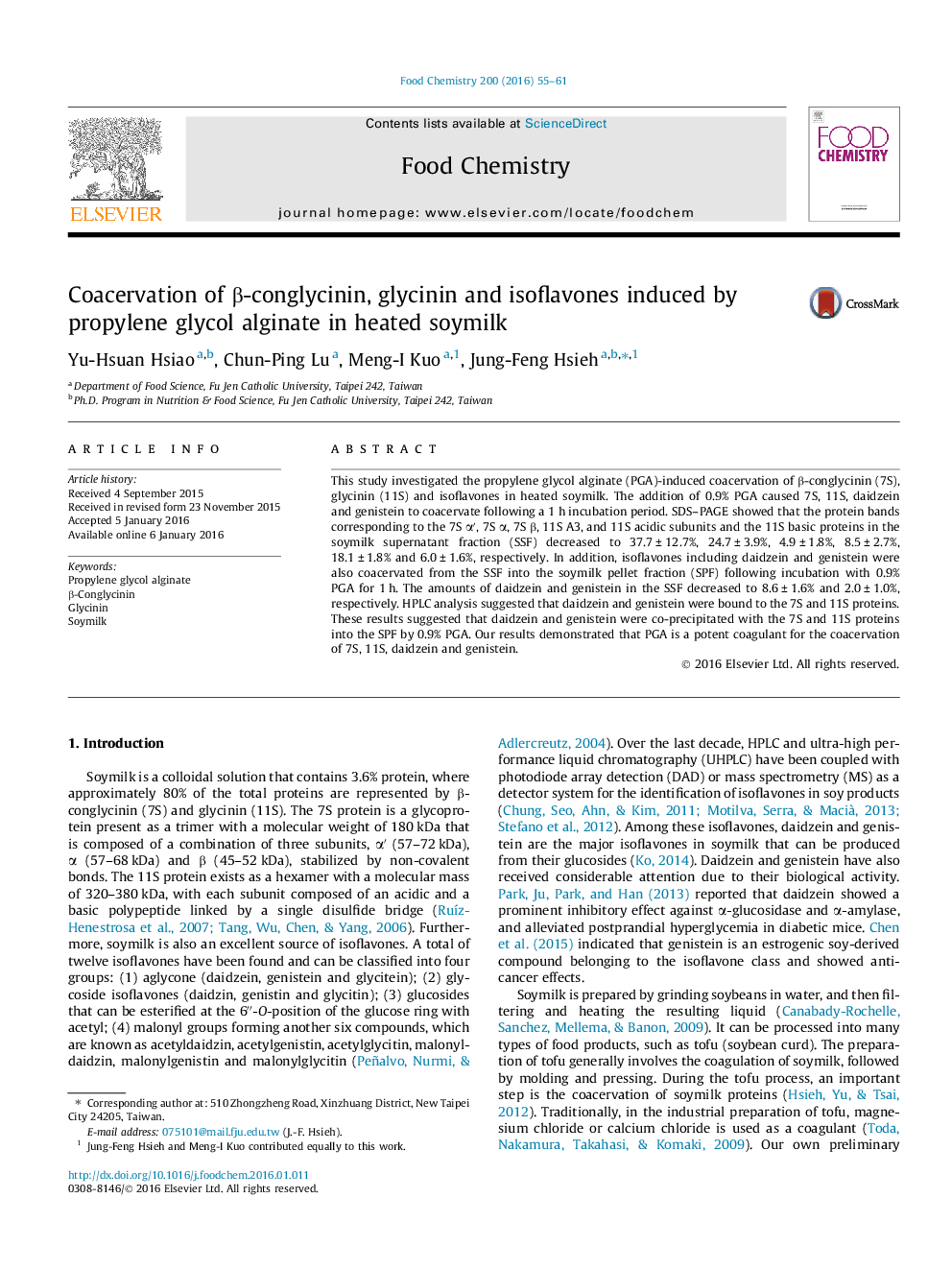| Article ID | Journal | Published Year | Pages | File Type |
|---|---|---|---|---|
| 1184072 | Food Chemistry | 2016 | 7 Pages |
•We analyzed the coacervation of soymilk proteins using SDS–PAGE.•We characterized the PGA-induced coacervation of 7S and 11S proteins.•Daidzein and genistein, 7S and 11S proteins were coacervated by PGA.•Daidzein and genistein were bound with the 7S and 11S proteins.
This study investigated the propylene glycol alginate (PGA)-induced coacervation of β-conglycinin (7S), glycinin (11S) and isoflavones in heated soymilk. The addition of 0.9% PGA caused 7S, 11S, daidzein and genistein to coacervate following a 1 h incubation period. SDS–PAGE showed that the protein bands corresponding to the 7S α′, 7S α, 7S β, 11S A3, and 11S acidic subunits and the 11S basic proteins in the soymilk supernatant fraction (SSF) decreased to 37.7 ± 12.7%, 24.7 ± 3.9%, 4.9 ± 1.8%, 8.5 ± 2.7%, 18.1 ± 1.8% and 6.0 ± 1.6%, respectively. In addition, isoflavones including daidzein and genistein were also coacervated from the SSF into the soymilk pellet fraction (SPF) following incubation with 0.9% PGA for 1 h. The amounts of daidzein and genistein in the SSF decreased to 8.6 ± 1.6% and 2.0 ± 1.0%, respectively. HPLC analysis suggested that daidzein and genistein were bound to the 7S and 11S proteins. These results suggested that daidzein and genistein were co-precipitated with the 7S and 11S proteins into the SPF by 0.9% PGA. Our results demonstrated that PGA is a potent coagulant for the coacervation of 7S, 11S, daidzein and genistein.
